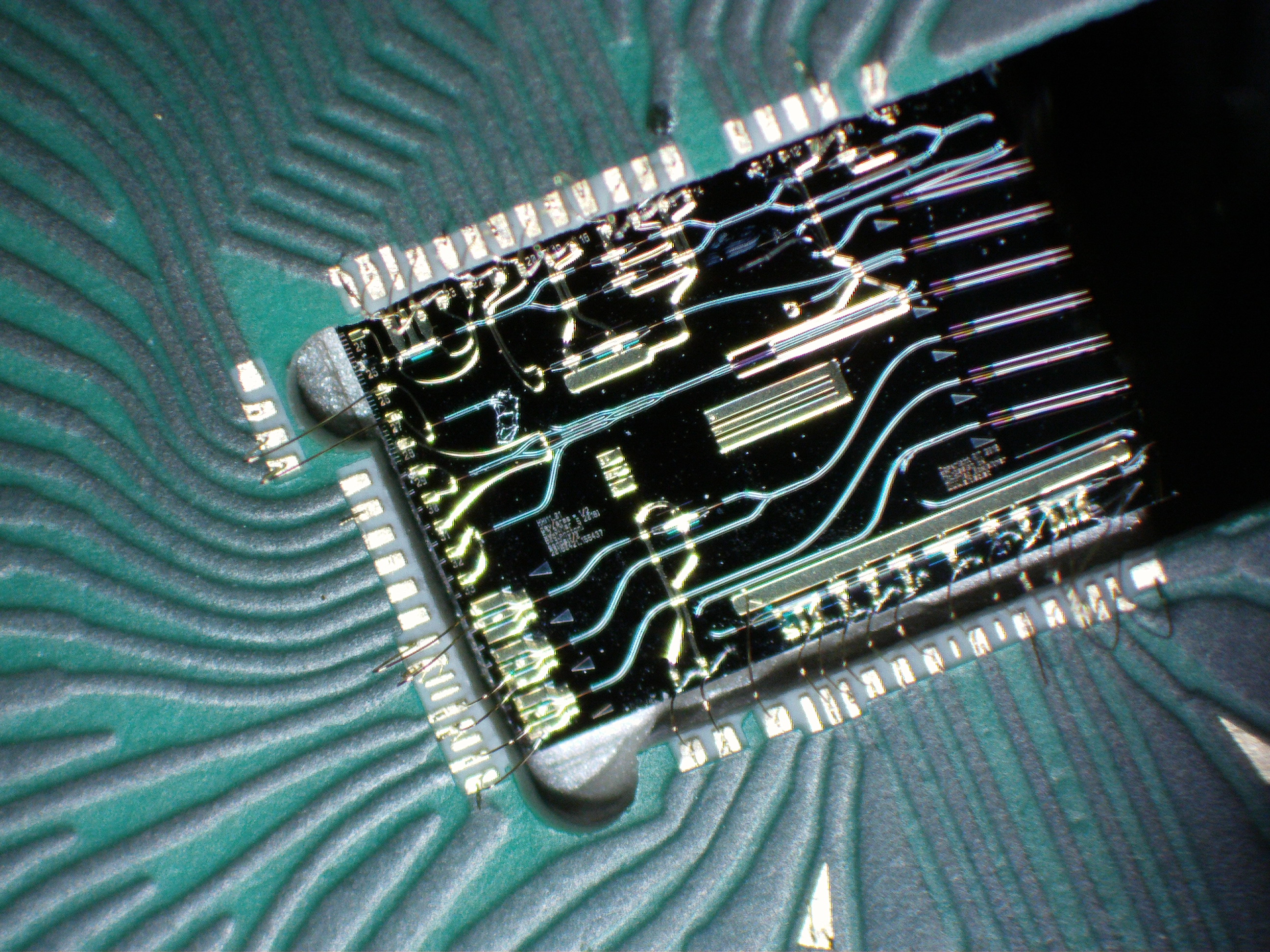The emergence of millimeter-wave technology exploiting unused frequency bands starting from 30 GHz opens new vistas for a plurality of application fields. TRITON will provide and co-integrate highly efficient gallium-nitride-on-silicon-carbide (GaN-on-SiC) and silicon-germanium (SiGe) electronics with silicon-on-insulator (SOI) photonics through a silicon interposer serving as versatile integration bench.
In a nutshell TRITON is a technology project funded by Austrian research programmes and develops a next generation of integrated chips, similar as they are nowadays found inside personal computers or mobile phones. The big difference, however, is the compatibility with much higher signal frequencies with approximately millimeter wavelength and the presence of a second technology layer in these chips that will significantly boost their performance.
Conventional electronics chips as produced in masses and included in every electronic device have enabled the modern information age, reaching from telephony and television to the rollout of the modern internet and massive computational powers. The technology behind has been successively improved during the last decades. It is now possible to host 100s of millions transistors on a microprocessor with a size smaller than a fingernail – produced at a cost that guarantees technology that is accessible for everybody.
Nevertheless, when it comes to massive data through-put as fuelled through novel end-user applications, present chip solutions are reaching their limits. For this reason TRITON introduces a much higher signal carrier frequencies, which are subject to higher data modulation speeds, and a second “key enabling technology”, namely photonics that serves as backhaul for the electronically supported radio signals.
Webpage: https://www.triton-project.at




